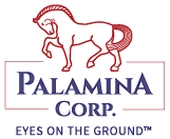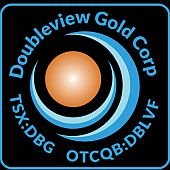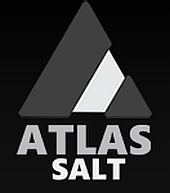 Constantine Metal drills 24.6 m of 260 g/t Ag at Palmer
Constantine Metal drills 24.6 m of 260 g/t Ag at Palmer
2017-08-17 09:01 ET – News Release
Mr. Garfield MacVeigh reports
CONSTANTINE DRILLS MORE HIGH-GRADE AT NUNATAK AG ZONE DISCOVERY, PALMER PROJECT, ALASKA
Constantine Metal Resources Ltd. has released assay results for three additional drill holes from the Nunatak AG zone, a new VMS (volcanogenic massive sulphide) discovery located three kilometres from the known mineral resource at the Palmer project, Alaska (8.1 million tonnes inferred grading 1.41 per cent copper, 5.25 per cent zinc, 0.32 gram per tonne gold and 31.7 g/t silver*). High-grade base and precious metals have been intersected over long intervals in follow-up drilling to discovery hole CMR17-89 (see news release dated July 27, 2017). To date, mineralization has been intersected over an area measuring approximately 180 metres by 50 metres, and over a vertical distance of approximately 200 metres and remains open in all directions.
The drill program has been expanded to 10,000 metres to continue the continuing exploration of this significant new discovery.
AG zone highlights:
- CMR17-92: 17.8 metres grading 11.7 per cent zinc, 0.2 per cent copper, 6.3 grams per tonne silver, 0.2 g/t gold, and 6.7 metres grading 5.7 per cent zinc, 2.2 per cent lead, 30 g/t silver, 0.2 g/t gold;
- CMR17-94: 24.6 metres grading 260 g/t (8.3 ounces per ton) silver, 0.5 g/t gold, 1.4 per cent zinc, 0.5 per cent lead; includes 10.3 metres grading 461 g/t (14.7 ounces per ton) silver, 0.9 g/t gold, 2.0 per cent zinc, 0.7 per cent lead, and 1,214 g/t (38.9 ounces per ton) silver, 1.3 g/t gold in a 2.7-metre subinterval;
- CMR17-96: 20.4 metres grading 9.9 per cent zinc, 0.2 per cent copper, 14.4 g/t silver, 0.1 g/t gold.
Garfield MacVeigh, president, stated: “The initial four holes released for the AG zone discovery have defined a significant new zone of mineralization that is wide open to expansion. While it is very early days in our exploration of the AG zone, the length, grade and broad area of the drill intersections in combination with the scale and intensity of hydrothermal alteration indicate excellent potential for a sizable deposit. The discovery is a major new development for the Palmer project and we look forward to the results of ongoing exploration drilling.”
Discussion of drill results
Assay results have been received for three new holes completed at the AG zone, and all three have intersected significant mineralization. Two holes, CMR17-92 and 94, were drilled on the same section as previously released hole CMR17-89 with the third hole, CMR17-96, testing 50 metres off section to the west-northwest. Mineralization has been intersected over an area measuring approximately 180 m by 50 m, and over a vertical distance of approximately 200 metres.
CMR17-92 intersected 17.8 metres of high-grade zinc mineralization approximately 140 metres south of the previously reported 9.2-metre high-grade silver-gold intersection in discovery drill hole CMR17-89. A second, 6.7-metre-wide zone of zinc-lead-silver-gold mineralization was intersected at the bottom of hole CMR17-92, which was lost prematurely within mineralization. Hole CMR17-94 intersected 24.6 metres of silver-rich polymetallic mineralization in a 50-metre updip stepout from hole CMR17-92. The CMR17-94 intersection includes a higher-grade interval grading 461 g/t silver, 0.9 g/t gold, 2.0 per cent zinc and 0.7 per cent lead over 10.3 metres, including a very high-grade subinterval grading 1.21 kilograms per tonne silver over 2.7 metres. Strong metal zonation occurs between holes, grading from silver-gold-barite dominant to zinc dominant. Mineralization varies from massive barite-sulphide to semi-massive sulphide, stockwork and replacement.
CMR17-96 intersected 20.4 metres of strong zinc mineralization in a 50-metre stepout along strike to the west-northwest from CMR17-92. Mineralization in CMR17-96 is similar to CMR17-92, and demonstrates excellent continuity of grade and width along trend between the two holes.
Nunatak prospect
The Nunatak prospect was drilled as part of the company’s dual-focus plan of exploring for new deposits across the district-scale property while also expanding and upgrading the south wall-RW zone inferred mineral resource. The new AG zone discovery has confirmed the multideposit potential of the Palmer property. It also highlights the opportunity for significant precious metal mineralization, which is characteristic of other Late Triassic VMS deposits in the region such as Greens Creek, one of the largest and lowest-cost primary silver mines in the world.
NUNATAK AG ZONE ASSAY RESULTS Drill From To Width (1) Width Cu Zn Pb Ag Au hole (metres) (metres) (metres) (feet) (%) (%) (%) (g/t) (g/t) CMR17-92 122.3 140.1 17.8 58.4 0.21 11.70 0.13 6.3 0.15 CMR17-92 244.2 250.9 6.7 22.0 0.10 5.73 2.17 30.0 0.20 Including 244.2 246.2 2.0 6.6 0.14 12.65 4.35 47.8 0.24 CMR17-94 35.9 41.1 5.2 17.1 0.01 0.09 0.11 34.6 0.56 CMR17-94 89.3 128.2 38.9 127.6 0.01 0.95 0.32 183.5 0.39 Including 93.7 118.3 24.6 80.7 0.05 1.35 0.45 260.0 0.53 Including 93.7 104 10.3 33.8 0.06 2.03 0.69 460.8 0.90 Including 93.7 96.4 2.7 8.9 0.13 4.03 1.86 1,214.4 1.34 CMR17-96 128.8 149.2 20.4 66.9 0.21 9.88 0.29 14.4 0.07 Including 128.8 132.8 4.0 13.1 0.22 15.41 0.37 32.9 0.11 CMR17-89 (2) 25.1 28.8 3.7 12.1 0.03 0.27 0.22 28.8 0.49 CMR17-89 (2) 127.9 137.1 9.2 30.2 0.09 0.19 0.21 312.6 0.89 (1) Drill intercepts reported as core lengths; true widths are unknown. Averages are weighted for length and density. (2) Previously reported drill intersection.
About the Palmer project
Palmer is an advanced-stage, high-grade volcanogenic massive sulphide (VMS) project, with an inferred mineral resource of 8.1 million tonnes grading 1.41 per cent copper, 5.25 per cent zinc, 0.32 g/t gold and 31.7 g/t silver.* The project is being advanced as a joint venture between Constantine (51 per cent) and Dowa (49 per cent), with Constantine as operator. The project is located in a very accessible part of coastal southeast Alaska, with road access to the edge of the property and within 60 kilometres of the year-round deep-sea port of Haines. Mineralization at Palmer occurs within the same belt of rocks that is host to the Greens Creek mine, one of the world’s richest VMS deposits. VMS deposits are known to occur in clusters and with at least 25 separate base metal and/or barite occurrences and prospects on the property, there is abundant potential for discovery of multiple deposits at Palmer.
About Constantine Metal Resources Ltd.
Constantine is a mineral exploration company led by a proven technical team with a focus on premier North American mining environments. In addition to the company’s flagship copper-zinc-silver-gold Palmer joint venture project, Constantine also controls a portfolio of high-quality, 100-per-cent-owned gold projects in the Timmins camp, Ontario. This includes the large, well-located Golden Mile property in Timmins and the Munro Croesus gold property that is renowned for its exceptionally high-grade past production. Management is committed to providing shareholder value through discovery, meaningful community engagement, environmental stewardship, and responsible mineral exploration and development activities that support local jobs and businesses.
* Eight-million-one-hundred-twenty-five-thousand-tonne inferred resource grading 1.41 per cent copper, 5.25 per cent zinc, 0.32 g/t gold and 31.7 g/t silver. See the company’s news release dated May 11, 2015, and available on SEDAR. Resource estimate utilizes a net smelter royalty cut-off of $75 (U.S.) per tonne with assumed metal prices of $1,200 (U.S.) per ounce for gold, $18 (U.S.) per ounce for silver, $2.75 (U.S.) per pound for copper and $1 (U.S.) per pound for zinc. Estimated metal recoveries are 89.6 per cent for copper, 84.9 per cent for zinc, 75 per cent for gold (61.5 per cent to the Cu concentrate and 13.5 per cent to the Zn concentrate) and 89.7 per cent for silver (73.7 per cent to the Cu concentrate and 16 per cent to the Zn concentrate) as determined from metallurgical locked cycle flotation tests. An inferred mineral resource is that part of a mineral resource for which quantity and grade or quality can be estimated on the basis of geological evidence and limited sampling and reasonably assumed, but not verified, geological and grade continuity. Confidence in the estimate is insufficient to allow the meaningful application of technical and economic parameters or to enable an evaluation of economic viability worthy of public disclosure.
Notes
Samples of drill core were cut by a diamond-blade rock saw, with half of the cut core placed in individual sealed polyurethane bags and half placed back in the original core box for permanent storage. Sample lengths typically vary from a minimum-0.3-metre interval to a maximum-2.0-metre interval, with an average 1.0- to 1.5-metre sample length. Drill core samples were shipped by transport truck in sealed woven plastic bags to ALS Minerals laboratory facility in North Vancouver for analysis. ALS Minerals operates according to the guidelines set out in ISO/IEC Guide 25. Gold was determined by fire assay fusion of a 30-gram subsample with atomic absorption spectroscopy (AAS). Various metals including silver, gold, copper, lead and zinc were analyzed by inductively coupled plasma (ICP) atomic emission spectroscopy, following multiacid digestion. The elements silver, copper and zinc were determined by ore-grade assay for samples that returned values greater than 10,000 parts per million by ICP analysis. Density measurements were determined at the project site by qualified Constantine personnel on cut core for each assay sample.
The 2017 exploration program for the Palmer project is managed by Darwin Green, PGeo, the company’s vice-president, exploration, for Constantine Metal Resources and a qualified person as defined by Canadian National Instrument 43-101. Mr. Green has either prepared or supervised the preparation of the scientific and technical disclosure contained in this news release and has reviewed and approved it for disclosure. He has also verified the analytical data for drill core samples disclosed in this release by reviewing the blanks, duplicates and certified reference material standards and confirming that they fall within limits as determined by acceptable industry practice. The analytical results have also been compared with visual estimates for the base metals to check for any obvious discrepancies between analytical results and the visual estimates.
We seek Safe Harbor.
http://www.constantinemetals.com/news/
































